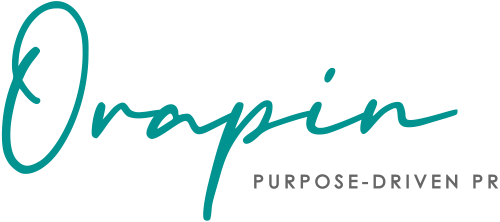
Expanding your media network is a great way to continue strengthening your brand awareness. Obviously, it would be awesome for your business or organization to be featured in the New York Times, Wall Street Journal or on the TODAY show, and we’re not saying you shouldn’t set your sights high, but it’s incredibly competitive and difficult to get to that level. The good news is that with today’s media landscape, you have plenty of opportunities to get what you do and the value your company offers in front of the public.
Let’s start with the basics: Having a strategically focused media relations strategy can play huge dividends, because it gives you earned exposure and validation from an outside source. It can raise the morale of your team, in getting some outside praise and attention; and, perhaps most importantly, it can drive demand for your services and mission. The key to a successful media relations strategy is to establish mutually beneficial relationships with those who can bring awareness to your brand.
Here are some things to think about to guide your strategy.
Research, research, research
Aside from the editors and journalists at traditional media outlets, like newspapers (their websites) and TV stations, you’ll want to think broader, especially about blog editors or other types of curators of media that might have an interest in your brand.
To give yourself a better chance of gaining traction with a journalist or blogger, think about the audiences or segments of the market that might benefit from your brand or service. What do those people read or likely pay attention to? Geography is the simplest place to start. Find an editor or reporter at a local news outlet — like a newspaper, or a news website or TV station — that might have an interest in either covering your company or organization or the market you serve. Take a look at what they’ve written, or covered in the past, and take note of their style. What do they seem to care about? Is there a pattern to what they seem to cover? If it jibes well with what you do, come up with some ideas for how you would pitch them story ideas. If it makes sense to think beyond a geographic location or market, do the same thing with a national or regional focus. Is there a key magazine or blog that covers your industry or a topic that you could provide expertise in?
The internet has democratized marketing in a sense, in that it has allowed communities to form naturally around each other via blogs and social media. This bypasses the traditional news media, but it also creates opportunities for organizations to think more creatively about sharing their stories beyond just the local newspaper. Once you have a good idea of whom you might approach, now you’re ready to think about how to best get your foot in the door.
Establish a rapport
If you are dealing with a reporter or editor — at a news outlet or even a blog — start from the perspective that they are likely getting bombarded with pitches from PR people virtually nonstop. This is important because first, you need to be confident that you have something that will add value for them and their audience for them to even think about paying attention to it. Second, it’s best to keep in mind that being overly pushy won’t work at any point.
“I’m so inundated with bad pitches from lazy PR people who never check to see what I write that a pitch like yours stood out for its quality,” a reporter at a major news site told us in response to a pitch.
Pitch emails are very standard and will likely be the best place to start in introducing yourself, your company or organization, and any ideas you might have. However, don’t tether yourself to email. An introductory phone call or even an in-person meeting, if that’s possible, can also go a long way to make an impression. However, while a phone call and offer to meet in-person are nice relationship-building gestures, reporters and editors are extremely busy so don’t get your feelings hurt if they don’t answer or return your call or take you up on the invitation.
Only pitch relevant news for your contact
If you’ve done your research, you will naturally know what your contact and his or her audience cares about. Like the major national news reporter talked about, he can easily pick out something that’s relevant in a pitch. It’s easy to get crunched for time, but it’s rude and lazy to send out mass emails to a large list – or even a small list, for that matter. Remember, quantity won’t net a quality return. If you want someone to write about news or a specific angle, it has to appeal to them.
Make yourself a resource
Once you establish rapport, the hope is that the credibility you have built up will lead to them coming back to you when they are writing about your industry or a topic or trend you are qualified to speak to. Position yourself as an expert who can provide insight from a news perspective as a way to add value for their audience. However, there may be times when you’re not the right person to talk about something with the reporter. Be honest and don’t try to be something you’re not. If you can suggest someone else who might be a better fit, even if they are from another company, the reporter will see that you really are a resource they can trust and not simply in it for your own gains. This will go a long way in helping both of you, and it fosters a strong relationship.
Your call to action
OK, now you’re ready. Time to start building the relationships with key media contacts that could pay dividends for your organization. Your task is to identify one new editor or producer of a news source or a blog who might be interested in your brand. Start with the research and when you find a good candidate, come up with an idea to pitch that is relevant and timely to their work. Then, send a very specific and well-crafted email pitch and get in the long game to foster the relationship.
Media relations is a long term strategy and one, if done well, can be tremendously valuable for your organization. Remember, journalists are people, too, and it’s not fair for you to expect them to do something for you if you’re not willing to build the relationship in a respectful, mutually beneficial way. The Golden Rule is key: treat others how you’d want to be treated.

Rhiannon Hendrickson is the founder and CEO of Orapin, which helps purpose-driven organizations transform their random acts of PR into a strategic, consistent approach that generates greater awareness and impact. She has worked with organizations of all sizes across myriad industries and causes to develop earned media and thought leadership programs that generate awareness, engagement, and, ultimately, support for those that are making a meaningful impact.
